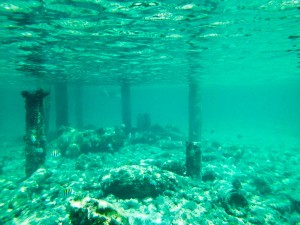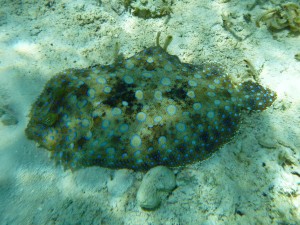
The Bahamas are a cultural and economic crossroads and have been for centuries. It is one of many places Christopher Columbus is given credit for “discovering,” ignoring millennia of native history and culture. The indigenous Lucayans were largely wiped out by European invaders. The islands were claimed for Spain but were later ceded to Britain in 1783 in exchange for East Florida. On July 10, 1973, the Bahamas gained independence from the United Kingdom.
Nassau, on New Providence Island, was established as a commercial port in 1670. The island is approximately 80 square miles, 21 miles long at its widest point. For centuries it was a hub for pirates, slave traders, and British and other European colonists. With the southern blockade during the American Civil War, British merchants used the Bahamas as a trading post for cotton. The Bahamas also benefited from the US’s prohibition on alcohol.
About 85% of the Bahamian population is descended from slaves, mostly African, brought or escaping to the islands. Many were freed when Britain abolished the slave trade in 1807, some were brought to the islands by British loyalists who left America after the American Revolution, and others escaped the US to gain freedom. About 70% of the population of the Bahamas lives on New Providence Island (approx. 250K people). Of the 6.2 million people who visit the Bahamas annually, well more than half visit the nation’s capital, Nassau.
The Bahamas is among the wealthiest nations in the Caribbean. Due of the lack of abundant natural resources, the Bahamas has long depended on location and outsiders to fuel the economy, essentially importing tourists along with many other commodities. While the Bahamian dollar is tied to the US dollar for exchange rates, most food and other goods are imported resulting in increased retail costs. (On average, I’d say we spent about 35% more on the grocery items we purchased, especially pre-packaged foods.) Currently, tourism accounts for about 45% of the gross domestic product (GDP) and employs about half of the working population. Banking is the other major industry. The GDP per capita in the Bahamas in 2010 was $24,312. In 2016, it was down to $20,568, which is a sizable decline, showing the ongoing effects of the world economic downturn that started in 2007.
The Hotel and Steam Ship Service Act of 1898 launched the Bahamas tourism industry. After Cuba was closed to American tourists, there was an additional increase of tourism. In 1959, work began to transform Hog Island, once owned by Axel Lennart Wenner-Gren, a wealthy a Swedish entrepreneur, into Paradise Island. The bulk of tourists either see Nassau from the cruise ship dock or from one of the many hotels and resorts on Paradise Island. Approximately 3.6 million people visited New Providence in 2016, with over 70% arriving via cruise ship. The remaining one million arrive by air and most stay at the Paradise Island resorts.
We spent the week exploring as much of the island as possible. There are sections so manicured and veneered to impress tourists that you’d expect to see Mr. Roarke standing outside waiting to greet them in his white suit. We drove through other sections where a hand-to-mouth existence was evident. We passed gates where the 1% of the 1% vacation, and others where the only thing left of the house was a gate hanging askew on the hinges. We saw past hurricane damage and areas obviously hit by the recession. We visited Adelaide Village, where 157 freed African slaves settled the area in 1831. We drove past refineries belching a chemical stink on the east end of the island. These places are all part of New Providence Island. At times it felt like guidebooks, and even locals, wanted to pretend that areas outside of Nassau didn’t exist to outsiders. There was a sharp contrast in the quality of the roads that lead away from the airport and those on the fringes.
In 2012, tourists brought approximately $2.3 billion into the Bahamian economy. The bulk of visitors report wanting to go to the beach, relax, snorkel, dive, and tour the islands. It is also worth noting that some of the primary environmental concerns include coral reef decay, waste disposal, and water pollution, all of which are negatively impacted by tourism. On the other hand, some of the tourist activities teach visitors about endemic endangered animals and respect for the reefs and oceans, so nothing is black and white.
It is also worth noting the climate’s influence on culture. It is hot, it rains regularly, temperatures only fluctuate about 10 degrees each day, and for half of the year, there is the threat of hurricanes. It is easy to mistake the stereotypical laid-back island persona as a result of living in paradise. It may instead be a result of accepting life as it comes, including the predictably unpredictable weather and knowing it is too fucking hot to get worked up over nothing. Understanding that problems occur. Pragmatic fatalism? All I know is that it is an attitude I can get behind and it forces me to realize I often get stressed over meaningless bullshit. That laid-back persona is also a way for locals to test attitudes. Underestimating other people is a fool’s game, but I saw it happen, so I get why people are guarded.
The majority of the people we interacted with were in some way dependent on tourism for their livelihood. It creates an odd socioeconomic dynamic. You see the same love-hate at shore towns in the states overrun by wealthy outsiders three months out of the year. We recognized the economy for what it is and did what we could to stay, eat, and shop locally, and tried not to be assholes. While the resorts most definitely provide jobs, the owners are foreign investors and some of that money leaves the islands. We also made additional efforts to tip, figuring that if we could afford to be there we could likewise afford to tip appropriately; that money goes straight into the local economy.
When we visited Grand Bahama Island in 2004 I knew little about the history and culture of the Bahamas. This time I paid more attention. I thought about the duality of how the Bahamas are perceived by outsiders and had just a glimpse of the other side thanks to locals who took the time to talk with us. Traveling with blinders may be appealing, but ultimately you don’t learn about place. Explore a little, meet locals, read – there will still be time for Bahama Mamas and snorkel charters.
Up next, we start exploring the island and introduce you to Orange Hill Beach and the Orange Hill Beach Inn.


 On the way to the hotel, we passed a road sign that pointed to “The Caves.” There was a small, unassuming parking lot and a stone chair, but not much else. We passed the spot at least 5-6 times before we finally pulled over to explore. This unassuming spot is a naturalist’s delight.
On the way to the hotel, we passed a road sign that pointed to “The Caves.” There was a small, unassuming parking lot and a stone chair, but not much else. We passed the spot at least 5-6 times before we finally pulled over to explore. This unassuming spot is a naturalist’s delight.
































































